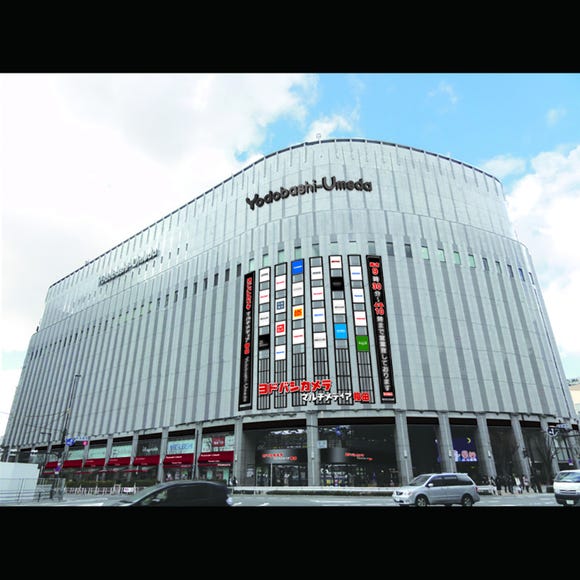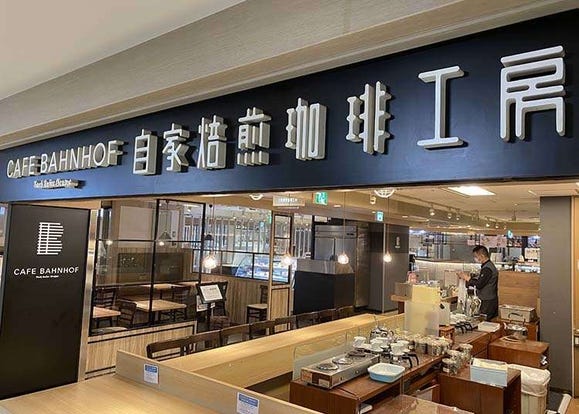
Kiyomizu-dera Temple (清水寺), a UNESCO World Heritage site, is one of Kyoto’s most iconic destinations, drawing visitors with its centuries-old history since 778. Perched on the slopes of Mt. Otowayama, its sprawling 130,000-square-meter grounds feature over 30 historic buildings and monuments, many designated as national treasures.
From the breathtaking Kiyomizu Stage that seems to float above the hillside to the legendary Otowa Waterfall, said to have healing powers, this guide introduces the must-see highlights that make Kiyomizudera a top choice for travelers to Japan.
Kiyomizudera Temple's Symbolic Three-Storied Pagoda

Kiyomizudera Temple, with a history spanning over 1,200 years, is one of Kyoto's most beloved landmarks.
As you ascend the steep, uphill path leading to the temple, you’ll first encounter the striking vermillion-lacquered Nio-mon gate, an impressive welcome to this historic site.
Climbing further, you’ll find the 31-meter-tall three-storied pagoda, one of the tallest of its kind in Japan. Visible even from downtown Kyoto, this pagoda is a symbolic feature of the temple, alongside the iconic stage of the Main Hall.
The pagoda’s vibrant vermillion hue makes it a favorite subject for photography, offering stunning views from every angle. Inside, the sacred Dainichi Nyorai Buddha is enshrined, adding to its cultural and spiritual significance.
Try Out the Tainai Meguri "Womb Walk" at Zuigudo Temple

After passing through the Nio-mon gate and following the temple path, you’ll come across Jishin-in Temple, also known as Zuigudo, named after the Buddhist deity enshrined within. Originally reconstructed in 1718, this temple houses a variety of Shinto and Buddhist deities associated with marriage, childbirth, and children, including its main deity, Daizuigubosatsu, which remains hidden from view.
One unique experience at Zuigudo is the "Tainai Meguri." This activity takes visitors through a completely dark passage, symbolizing the womb of a Buddhist saint. Guided only by the touch of large juzu prayer beads fixed along the walls, visitors navigate the darkness with no visual cues, relying solely on touch and sensation.
At the journey’s end, a softly lit stone engraved with the Sanskrit characters for Daizuigubosatsu emerges from the shadows. Walking around the stone and offering a prayer is said to symbolize renewal and rebirth. Exiting back into the light completes this mystical and deeply symbolic experience.
The Kiyomizu Stage, Constructed Without a Single Nail

Kiyomizudera’s Main Hall, perched dramatically on a cliff, was built to enshrine Seiju Kannon, the Buddhist goddess of mercy with a thousand arms. This architectural marvel was constructed using the traditional Japanese technique of "Kakezukuri," a lattice-like framework of wood that supports the structure without the use of nails.
The stage in front of the Main Hall is thought to have evolved gradually during the Heian era, as the rise in devotion to Kannon drew increasing numbers of visitors. Over time, the platform was extended further out, eventually projecting into mid-air to accommodate the crowds.
Eighteen massive wooden pillars, crafted from 400-year-old keyaki trees, support the stage with remarkable strength and precision. Despite the rethatching of the hall's cypress bark roof, which began in February 2017 and lasted until March 2020, visitors were still able to enter and experience this iconic site during the restoration.
Tour Kiyomizudera Temple's Grounds to See the Inner Temple, Pagoda, and More
After exploring the Main Hall, continue along the path to visit other notable halls, including the Shaka-do Hall, Amida-do Hall, and the Inner Sanctuary.
The Inner Sanctuary, situated directly above the Otowa Waterfall, features a stage built using the same distinctive *kakezukuri* technique as the Main Hall. From this vantage point, you can take in stunning views of the Main Hall framed by valleys adorned with cherry blossoms in spring and vibrant foliage in autumn. The panoramic view of Kyoto City from here also makes it a favorite photography spot.
Nearby, between the Main Hall and the valley, stands the pagoda of Kiyomizu-dera's sub-temple, Taizan-ji Temple. Dedicated to Koyasu Kannon, the goddess of safe childbirth, it is affectionately known as the Pagoda of Safe Childbirth, where visitors come to pray for smooth and healthy deliveries. Following the path downhill from the pagoda will lead you to the iconic Otowa Waterfall.
Otowa Waterfall, the Origin of Kiyomizudera Temple's Name


Otowa Waterfall, the namesake of Kiyomizudera ("Pure Water Temple"), is a popular spot often accompanied by a long line of visitors. Legend holds that the temple was founded when the Buddhist monk Enchin Shonin was guided to the waterfall through a divine revelation in a dream.
The waterfall’s three streams, known as "Golden Water" or "Water of Longevity," have been cherished for their purity and believed to grant blessings. Visitors use long-handled ladles to drink the water, offering prayers for their wishes to come true.
According to folklore, the three streams are said to provide different benefits, but all are equally regarded as auspicious and beneficial.
Receive the Buddha's Divine Protection with a Kiyomizudera Temple Good Luck Charm



Kiyomizudera Temple offers a variety of good luck charms, with some particularly popular among both domestic and international visitors. One favorite is the charming "Good Luck Sakura Bell," featuring a delicate floral lattice design and a clear, melodic chime. Another is the adorable "Good Fortune Charm," crafted from tiny, crinkled shells.
For every wish, the temple has an exclusive charm, whether it’s for general protection, luck in love and marriage, or even relief from headaches.
Be sure to check out the "Mini Daikoku" charm, representing the Shusse Daikokuten deity enshrined in the Main Hall. Other unique options include the Blue Dragon God charm, which contains sacred water from Otowa Waterfall, and the charm of the Fudo-myo-o deity, believed to bring powerful blessings.
A Treat for After Visiting Kiyomizudera Temple: Walk Around the Temple Town


Strolling through the nearby town has long been a cherished tradition after visiting a temple or shrine, and a trip to Kiyomizudera Temple is no exception. The road leading to the temple is a bustling hub of activity, lined with shops and steeped in charm. Highlights include Chawan-zaka Slope, known for its pottery shops, and the picturesque San-nen-zaka and Ni-nen-zaka Slopes, which lead toward Gion.
For souvenirs, the area offers a delightful variety of Kyoto specialties. From wagashi (Japanese sweets) and tsukemono (pickles) to ceramics, Kyoto dolls, fans, and other traditional crafts, you’ll find plenty of unique items to take home. Don’t miss the opportunity to savor Kyoto’s cuisine as well—numerous shops serve boiled tofu, soba, and an array of desserts to round out your visit.
Etiquette While Visiting Kiyomizudera Temple
Smoking, eating, and drinking are strictly prohibited within the premises of Kiyomizudera Temple. Additionally, tripod photography is not allowed in many areas, including the Main Hall Stage, so be sure to observe and follow all posted guidelines during your visit.
Text by:word
*Prices and options mentioned are subject to change.
*Unless stated otherwise, all prices include tax.
Popular Tours & Activitiess
Recommended places for you
-

Kambei Sannomiyahonten
Yakiniku
Kobe, Sannomiya, Kitano
-

Kanzenkoshitsuyakinikutabehodai Gyugyu Paradise Sannomiya
Yakiniku
Kobe, Sannomiya, Kitano
-

ISHIDAYA Hanare
Yakiniku
Kobe, Sannomiya, Kitano
-

Jukuseiniku-to Namamottsuarera Nikubaru Italian Nikutaria Sannomiya
Izakaya
Kobe, Sannomiya, Kitano
-
Goods

Yoshida Gennojo-Roho Kyoto Buddhist Altars
Gift Shops
Nijo Castle, Kyoto Imperial Palace
-

Yodobashi Camera Multimedia Umeda Store
Shopping Malls
Umeda, Osaka Station, Kitashinchi
-
Ad

Experiencing Manga as Culture, Not Just Reading It: Expo 2025 with Rumiko Takahashi
-

Everything You Need to Know About teamLab Biovortex Kyoto (2025 Insider Guide)
by: Wemmy Chau
-

New Way to Reach Koyasan! Ride Nankai's 'GRAN Tenku' for a Heavenly Journey
by: Guest Contributor
-

Kyoto's Hidden Treasures Open This Winter! Enjoy Exclusive Access to 15 Rare Cultural Sites (Jan-Mar 2026)
by: Guest Contributor
-

November Events in Kansai: Fun Festivals, Food, and Things to Do in Kyoto & Osaka
-
Ad

Café Bahnhof in Osaka: The home-roasted coffee that captivated G20 leaders!
Inspiration for Accommodations
-

Spacious Family Hotel in Namba: 20 Comfortable Stays for Family Fun
-

Charming Hotels to Enjoy the Spectacular Views of Arashiyama's Autumn Leaves from Your Room
-

Experience Stunning Views of Osaka Castle from Private Spaces: Top Hotels Near Osaka Castle
-

Recommended by Visitors! Arashiyama's Best-Rated Hotels
-

Family-Friendly Universal Studios Japan Hotel with Excellent Access
-

Enjoy a Comfortable Stay in Osaka! 10 Hotels with Convenient Airport Shuttle Services
-

Top 10 Recommended Hotels Near Namba Station with Great Access
-

Enjoy Night Views from Your Room! Recommended Hotels in Namba Area
-

Kasuga Taisha: A Kyoto Day Trip to See the Unforgettable Sight of 3,000 Lanterns
-

8 Most Popular Shrines in Kyoto
-

Complete Guide to Buying Japanese Medicine in Japan: Phrases and Vocabulary You Need to Know
-

Osaka Travel Service Center: So Many Incredibly Convenient Services - in English!
by: WESTPLAN
-

5 Unique Shrines and Temples in Osaka and Kobe for Your First Visit
by: WESTPLAN
-

5 Must-Visit Nara Temples and Shrines: Discover the Timeless Beauty of Japan's Ancient Capital
by: WESTPLAN
- #best gourmet Osaka
- #things to do Osaka
- #what to do in kyoto
- #what to bring to japan
- #best gourmet Kyoto
- #new years in Osaka
- #what to buy in nanba
- #Visiting Osaka
- #onsen tattoo friendly arima
- #daiso
- #Visiting Kyoto
- #best japanese soft drinks
- #japanese fashion culture
- #japanese convenience store snacks
- #japanese nail trends












